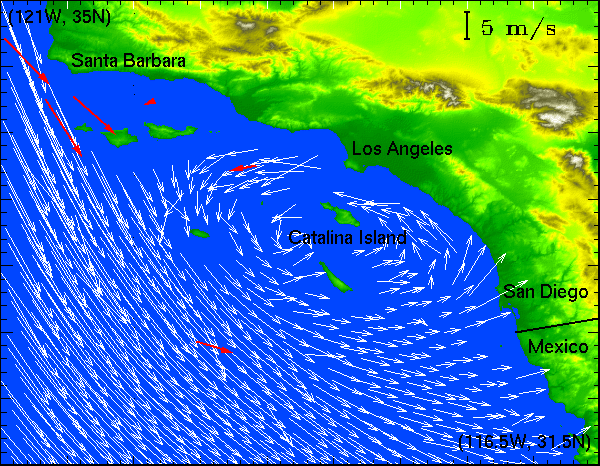
QuikSCAT Reveals the Surface Circulation of Catalina Eddy
Abstract:
The Catalina Eddy, a small, recurring cyclonic vortex in the ocean
off Los Angeles, is of keen interest to local weather forecasters
because of the moderating oceanic effect it brings to the city.
Its small size and shallow vertical extent have made it difficult to
monitor and predict using conventional data. The microwave
scatterometer on the QuikSCAT spacecraft has generated high-resolution
surface wind vectors that provide the first visualization of the
complete cyclonic flow of the eddy. Moreover, the superior performance
of the QuikSCAT scatterometer demonstrates the relative inaccuracy
and inconsistency of predictions of the eddy based upon numerical
weather prediction models.
 Caption:
Caption:
A complete Catalina Eddy circulation captured by
QuikSCAT surface wind observations on 13 March 2000. The red
arrows are equivalent neutral winds at 10-m height derived from NDBC buoys.
Reference:
Hu, H. and W.T. Liu, 2002: QuikSCAT Reveals the Surface Circulation of Catalina Eddy,
Geophys. Res. Lett., 29(17), 1821, doi:10.1029/2001GL014203.
|

